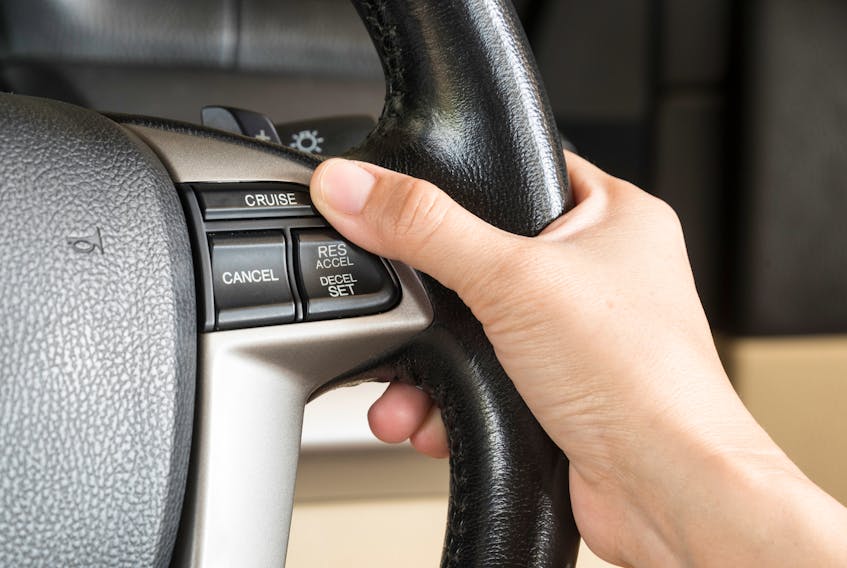
MARYSTOWN, N.L. — Steve Breon isn’t a fan of cruise control.
Breon, who operates Safety 1st Driving School on the Burin Peninsula, doesn’t use it himself while driving.
Cruise control allows a driver to set their speed and take their foot off the accelerator. To disengage the speed usually requires pushing the brake or pulling a lever.
Breon thinks the now-commonplace feature in today’s vehicles affects people’s sense of awareness and worries mostly about drivers using the system at speeds that are too high.
While the highway speed limit on the Burin Peninsula is 90 kilometres per hour (km/h), the simple fact is most people are driving 100 km/h or more, he says.
At that rate, reaction time is an issue.
DID YOU KNOW?
Cruise control has been in vehicles a lot longer than most people may realize. American Ralph Teetor, who was blind, is credited with inventing the “Speedostat,” or “Stat” in the late 1940s. According to a Smithsonian.com article published in 2018, Chrysler was offering Speedostat on all car models by 1959. The Cadillac Division at General Motors gave the feature the name it is most commonly known as today not long after. With the oil crisis in the 1970s, cruise control became increasingly popular for its ability to conserve gas.
“From what my textbooks show me, even a half second to a second delay doubles your chance of being into an accident,” he said. “A half second is nothing.”
Then there’s night driving.
“If you’ve got cruise control locked into 100 (km/h), or even say 95, on the Burin Peninsula Highway at night time, your headlights don’t shine far enough to show you if there’s a moose out in the roadway anyways,” Breon says.
The good and the bad
Cruise control is like most technological advances - there are good and bad aspects, says Julia Kent, the director of public and government affairs with CAA Atlantic.
It does help motorist save money on gas and it's good for the environment. But using cruise control in anything less than ideal driving conditions, however, is dangerous, Kent says.
In wet weather and icy roads, hydroplaning and black ice can mean the time to react isn’t there.
“It’s really something you want to be using in summer conditions, and like I said, when you are using it, you always want to make sure that it’s being used simply to stabilize and maintain your speed, not to allow you to do other things like take your eyes off the road or check your phone, any of the other distractions that are in your vehicle, like your GPS,” Kent says.
Cruise control was just the first glimpse of the “monster we have on our hands” of autonomous self-driving vehicles, says Kent.
New cars come with all kinds of features – including adaptive cruise control, which automatically adjusts speed to keep back from vehicles up ahead, as well as parking and lane changing assists – that are removing humans from the equation behind the wheel.
“There are lots of cars on the road in North America today that area pretty well self-driving, so we’re just getting to the very beginning of that, for sure,” Kent says.
Read more about our Need for Speed, its risks and consequences









